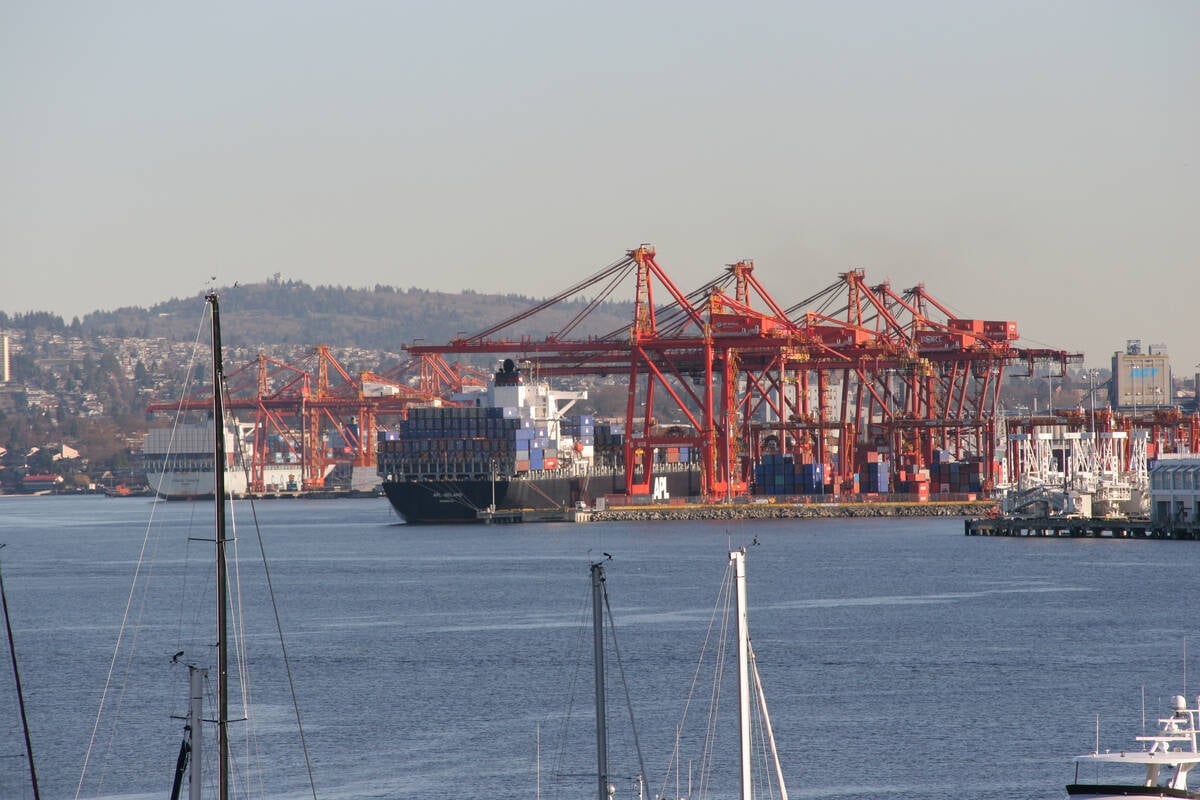SASKATOON — Biofuel groups in the United States are hoping a bipartisan bill about maritime biofuel soon wends its way through Congress.
The Renewable Fuels for Ocean-Going Vessels Act was introduced in March by Republican senator Pete Ricketts and Democratic senator Amy Klobuchar.
Why it Matters: Maritime biofuels could be a big future demand driver for U.S. crops such as corn and soybeans, which in turn could help buoy prices for Canadian crops such as wheat and canola.
Read Also

New wheat varieties offer Prairie farmers jump in yield
Three experimental wheat varieties developed by Agriculture Canada are showing yield increases of eight to 15 per cent over AAC Brandon wheat in registration trials.
The proposed legislation would amend the Clean Air Act to allow renewable fuel to generate credits under the Renewable Fuel Standard (RFS) when used in ships.
“This common sense legislation will remove a regulatory roadblock and enable U.S. biodiesel and renewable diesel producers to keep RFS credits when their fuel is used in U.S. ports to supply cargo, tanker, and passenger ships,” Kurt Kovarik, vice-president of federal affairs for Clean Fuels Alliance America, said in a recent press release.
“When ships arrive in U.S. ports, they’ve often filled up overseas with renewable fuels but can’t do so here.”
Mariannette Miller-Meeks, a Republican member of Congress from Iowa, said the legislation is a priority for her party.
“The bill we have for marine fuels is a bill that we want to get across the finish line,” she said during a recent webinar hosted by Agri-Pulse.
“We’re going to continue to push to get some of this stuff into a year-end package.”
Miller-Meeks believes biofuel could eventually capture four to five billion gallons of the annual maritime fuel market. If that all went to ethanol, it would create a new market for 1.5 billion bushels of corn.
Ben Kruger, senior vice-president with Roeslein Renewables, said crop margins in the United States are being squeezed by tariffs, high input and labour costs and a global oversupply of crops.
“We need more demand,” he said.
Kruger said the U.S. produces enough biomass to fuel 50,000 ships per year.
He said it is possible that within five to seven years, maritime biofuel demand for BioLNG, biodiesel and green methanol could be the equivalent of 30 per cent of all the world’s existing biofuel demand today.
“We’re talking about something very material,” he said.
That market could be worth US$6 to $10 billion per year for the U.S. agriculture sector.
If all the demand went to soybean-based biofuel, it would amount to one to two times the size of the entire Iowa soybean crop.
It would be far more than China’s annual demand for U.S. soybeans in a good year and as big as the current U.S. road transportation demand for biodiesel under the RFS.
Farmers are going to need that extra demand because Brazil could easily add another one billion bushels of soybean production over the next 10 years, said Kruger.
The International Maritime Organization’s (IMO) proposed Net-Zero Framework would force ships to gradually reduce their greenhouse gas emissions over time by using low-carbon fuels in places of traditional fossil-based marine fuel.
The IMO met in mid-October to vote on the proposal but decided to delay the vote for another year due to push back from groups including U.S. president Donald Trump’s administration.
However, Kruger said that isn’t the only way demand could be created. There is other legislation, such as the European Union’s FuelEU Maritime Regulation, which was implemented on Jan. 1, 2025.
There is also “a ton” of regional programs popping up around the world.
“On top of that, there is strong voluntary demand,” said Kruger.
Big retailers have environmental stewardship programs, and ocean shipping is a huge part of their environmental footprint, so that is another big potential demand driver.
















